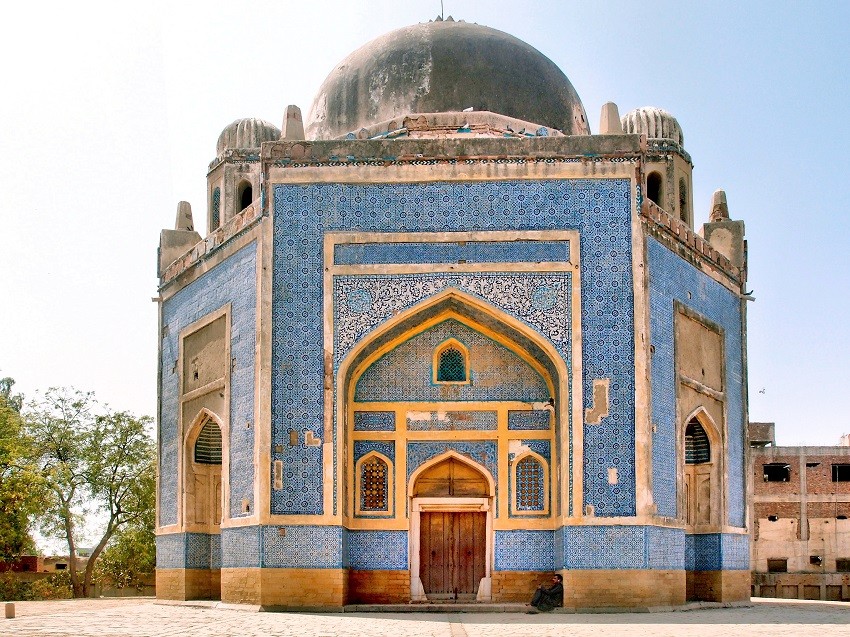
A selection of articles from the Journal of Sind Historical Society that ceased publication after partition and is now largely forgotten

Sindh has always taken pride in its syncretic cultural image but now, with greater polarisation based on religious, ethnic and sectarian identities, it appears the reading of Sindh’s past is undergoing a change as well. The Manzilgarh incident of 1939, the All India Muslim League formation of the government in 1942 , the election result of 1946 and then partition affirmed that the processes by which people created their identities in Sindh became less intertwined and more colloidal.
Syncretism, a positive term, has not always been understood as such. It has negatively been described as a jumbled and confusing mixture of religions and distinguished hybrid, and thus like lesser religions than what is pure and authentic. Syncretism can result from violent domination where one group conquers a different group, a product of large-scale imposition of one alien culture, religion, or body of practices over another that is already present.
In such cases the subjugated group often reconstructs its identities by borrowing symbols and meanings from those who dominate it. It can thus negatively imply that the borrowing group is dependent, lacking in creativity, and fundamentally incapable of defining itself. This mixture is a colloidal suspension of two ultimately irreconcilable substances. The result is a temporary mixture that will invariably separate over time because the component parts are unalterable and must remain forever distinct and apart.
Sindh can be described as a shatter zone through which a large number of people passed, either in military or peaceful invasions. Socio-culturally, the area is a mosaic than a relatively unitary kind of a social structure. The historical creation of such a mosaic in Sindh entails people reworking and intertwining shards of symbolic meaning. As a process, it involves taking things apart as much as it does putting things together. By linking convergences with divergences, this process resists creating identities from irreconcilable substances. Instead, it utilises multi-voiced symbols and meanings to generate new socio-cultural solutions: "Such side long glances reveal how Sindhis create their identities not from the simple historical mixing of oppositions but a socio cultural code switching process that transgresses boundaries by intertwining them".
Such intertwined identities point towards a meaning in multiple socio-cultural assemblages that rarely speak, symbolically or otherwise, in singular voices and tones. Rather than simply conclude that Sindhi identity is syncretic, the region’s intertwined socio-cultural character sees it as a zone in which people’s lives are not constituted by a mixture of parts bound to naturally separate.
The Journal of Sind Historical Society which was published from May 1934 to January 1948, ceased publication after partition and is now largely forgotten. These articles reveal much about Sindh’s past, and the diversity of its people and point towards histories of the region and nation that was intertwined rather than exclusive.
These concentrate on Sindh’s pre-colonial and colonial past, focus of British and indigenous actors, and showcase Sindh’s socio-cultural spectrum. It is an effort to place scholarship back on the front desk as all these efforts have been largely forgotten. Dr Mubarak Ali’s Sindh Observed is the only book to reprint some of the articles in full from the Journal.
The articles arranged in chronological order are on the ‘The Kalhoras Dynasty’ and its ‘Overthrow by the Talpur Chiefs of Sind’,‘Crime and Punishment in the Days of the Talpur Rulers of Sind 1783-1843’, ‘Diwan Gidumal’ and ‘Seth Naoomal Hotchand’ and ‘Mirza Khusro Baig’, all by AB Advani, Lieutenant Ameil and Baluch Levy. ‘The Sindh Battles - 1843’, ‘Observations of Baloch Poetry on Sind Border’ are by H.T.Lambrick, ‘Memorandum of Occurrences’ which took place in Hyderabad in Sindh between Feb 14-18, 1843 by Ramjee Gun Noojee, ‘Notes of Sir Napier’ by John Jacob, ‘Letters received’ by John Jacob and ‘Bartle Frere’ by Patrick Cadell. ‘Historical and Racial Background of the Amils of Hyderabad, Sind’ by S.J.Narsain, ‘Legends of Old Sind’, ‘Census Report of Sind for the Years 1931 and 1941 - A comparison’ are both by NM Bilimoria. It also carries the original citations from the Journal of Sind Historical Society.
Due to the great change towards an exclusionist approach, some of the givens of our culture and values are being reassessed. This too seems to be such an effort and appears that terms like syncretism are being reviewed and redefined. This is not like casting syncretism aside altogether, but to give it a more nuanced meaning, more complex than otherwise assumed. It is being stressed that the syncretic culture expresses itself differently than was previously assumed, existed in its multifarious phased of negotiations and manifests itself in a number of ways. It may be said, however, that the pieces which have been selected by the editors do not really measure up to the assumptions more pointedly that have been stated in the introductory part of the book.
The spirit of scholarship that informed the Historical Society needs to be reinvigorated so that serious scholarship in history and culture continues to take place.
Discovering Sindh’s Past -- Selections from the Journal of Sind Historical Society 1934-1948
Edited by: Michel Boivin, Matthew A Cook, Julien Levesque
Publisher: Oxford University Press
Pages: 319
Price: Rs1195